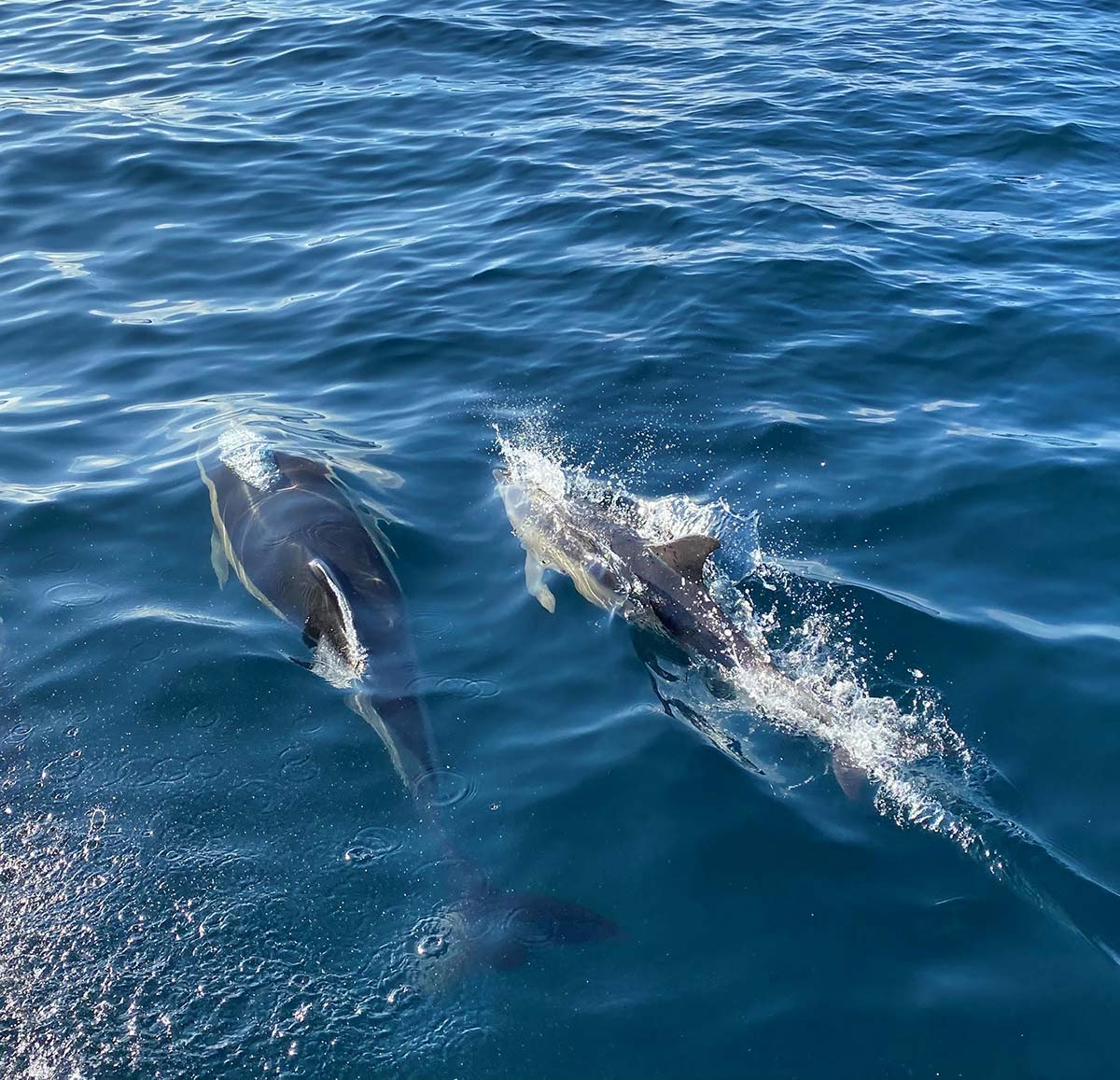
Using what you see on the surface to decipher what’s going on down below.
One of the most important components of tuna fishing is being able to pick up on visual cues while on the grounds. While it may seem odd to be looking at and above the surface for a fishery that usually takes place in hundreds of feet of water, the surface can be telling you everything that is going on in the area. Having high points on the boat, a good set of binoculars, and the knowledge of what to look for can put you on a bite that hasn’t even been discovered yet!
The first signs to look for are the obvious ones. Tuna on the surface would be the most obvious. They have two different modes usually. The first being all out feeds with fish foaming on the surface, crashing up top, and airing out are all signs of a hungry pack of fish. The next mode is breezing fish, which is when fish are in transit; they will usually be throwing small v-wakes right below and swimming at a slow steady speed. While not nearly as amped up as the feed fish, they can usually be coaxed into giving up a bite or two.
In our summer and fall fisheries, it is uncommon to find a feed that is just pure tuna. The bounty of forage fish supports a vast number of oceanic predators, including marine mammals. If you happen to come upon an area that has whales, especially ones that are feeding, it’s one of the most promising signs. In order for whales to be feeding, there has to be tons of bait in the area. Instinctually, the tuna know this and will not be far behind if they’re not already there. Whales stun and disorient a lot of bait during their feeding process which allows for easy pickings for these fish. Combine the easy meals and number of meals around the whales it’s easy to see why fishing amongst them will usually payoff.
In addition to whales, many times we will come across porpoise, or dolphins. The tuna will travel with these pods a lot of times, as the porpoise are phenomenal at not only finding bait pods, but organizing them into easy-to-eat bait balls. The tuna will hang out under the porpoise and allow them to get the bait all balled up before exploiting the work they just did.
The next few signs are less obvious, but equally, if not more, important. The end all sign for me that will keep me fishing an area are “slicks and chicks.” If I stumble into an area that the surface looks like it has an oily sheen with small black birds dancing on it, I am going to be hard pressed to leave it. The small black birds, or chicks, are storm petrels which have a very unique way of feeding, relying on the small remnants of fish as their diet. These small remnants are most commonly the left-over tiny scraps of bait fish that have been, or are currently, being macerated below. The oily sheen, or slick on the surface, is the oil being released from the baitfish as they are eaten. Finding either the chicks or the slicks are a great sign, but finding both is a very promising sign.
Another common bird to see are shearwaters, which will be substantially larger. These birds will be gliding just above the surface or high up in the sky looking for predators and bait fish moving to the surface. While not as a great as chick birds, they still are a positive sign and can indicate feeding fish.
If none of these signs above can be found, there are still signs that can lead to fish even if they are not directly related. If I cannot find cues indicative of feeds, I will be on the lookout for just life in general. Sea turtles, ocean sunfish, sharks, and other large marine animals will usually be found in water with a food source. While usually not feeding with the tuna or on the same bait, life is always found with life, so if I can find an area that has these signs, it is always worth at least a once over. If no visual life is seen, the last visual sign can be the water itself. Look for rips, or even color changes in the prop wash, as these breaks can lead to blind bites or put you on the path to find life.
Tuna fishing requires so much out of your senses, and your sight is the most important. Being able to find and recognize these visual cues can put you into some of the best days of fishing. Always be on a constant lookout, as just one bird, one whale, one rip can lead you to a rod going off.



